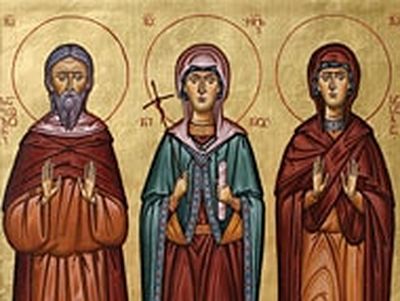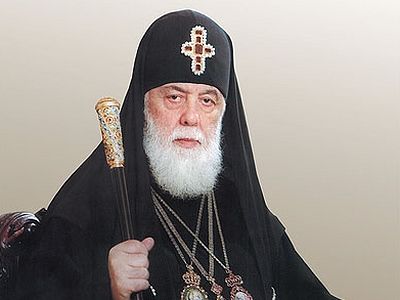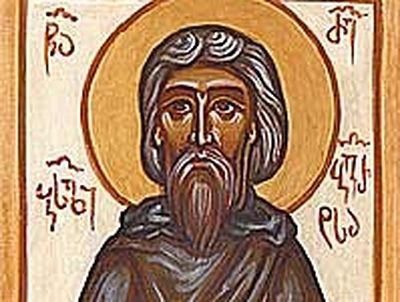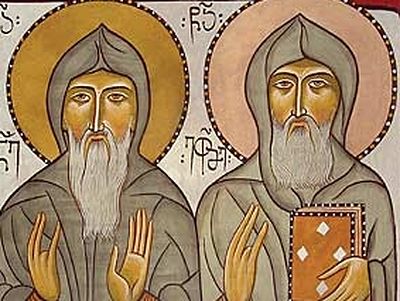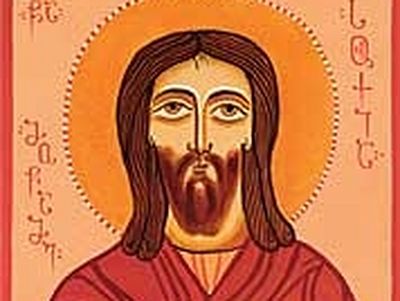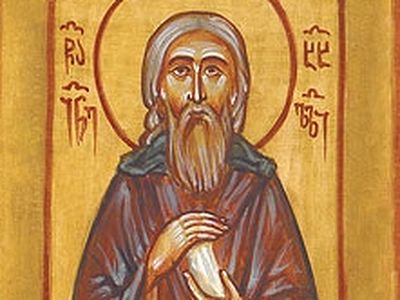Memory 23 May (5 June)
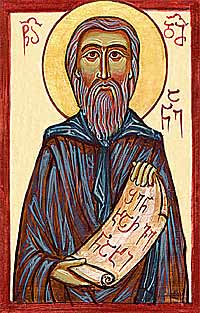 St. Damiane (before monasticism King Demetre I). The scroll in his hands reads: “Thou art the Vineyard.”
St. Damiane (before monasticism King Demetre I). The scroll in his hands reads: “Thou art the Vineyard.”
|
| St. Damiane (before monasticism King Demetre I). The scroll in his hands reads: “Thou art the Vineyard.” |
Saint Damiane (in the world King Demetre I) was the son of Holy King Davit the Restorer.
King Davit proclaimed his son co-ruler of Georgia and crowned him with his own hands. He declared that his son Demetre, through his wisdom, chastity, bravery, and handsome appearance, would rule Georgia better than he himself had. Demetre acquired great glory while his father was still alive. In 1117 Davit sent him to Shirvan to fight, and the young commander astonished the people with his deftness in battle. Demetre seized Kaladzori Castle and returned home with many captives and much wealth.
King Demetre I struggled tirelessly to protect the inheritance he had received from his father: he guarded Georgia’s borders and fought to enlarge its frontiers. Many regions, including Hereti, Somkhiti, Tashiri, Javakheti, Artaani and the Tao border, were repopulated during King Demetre’s rule. These regions had been largely deserted after King Davit joined Tbilisi to the region of Heret-Kakheti.
King Demetre was never shaken by the evil intrigues plotted against him. First his noblemen revolted, demanding that his stepbrother, Vakhtang (Tsuata), replace him as king. (Ioane of Abuleti was the leader of this conspiracy.) Then Demetre’s own son Davit rebelled against him. Deeply disturbed by the behavior of his first-born son, the pious king could no longer bear the vanity of the world — he was tonsured a monk in the Davit-Gareji Wilderness and given the new name Damiane. He abdicated to his son, but Davit ruled just six months before he reposed.
While laboring at Davit-Gareji Monastery, Damiane composed many great hymns for the Church. His hymn to the Theotokos, “Thou Art the Vineyard,” is outstanding among these works. In order to protect the interests of the Georgian kingdom after his son’s death, Damiane was obliged to leave the monastery. He returned to the throne and intervened in the affairs of the government. At the same time he named another of his sons, Giorgi, co-ruler.
King Damiane-Demetre completed construction ofGelatiMonastery, which had been started by his father,Holy King Davit theRestorer. St.Damiane reposed in 1157; he was buried atGelatiMonastery.
A 12th-century image of St. Damiane-Demetre was among the frescoes at the Davit-Gareji Monastery. In the 19th century the Russian traveler Andrew Muraviev reported seeing the fresco intact, but today only a narrow upper band of the image remains. A fresco of the pious king and monk Demetre has been preserved in the church at Matskhvarishi (now Latali) in the Svaneti region.
Armed with divine wisdom, purity, grace and bravery, O venerable Damiane, pray to God for us!
